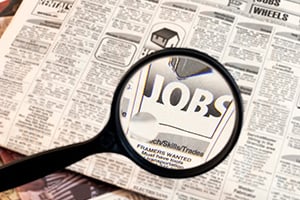 This morning’s jobs report was a disappointment. Total new jobs came in at 245,000. This result was well below the 460,000 expected and even further below the 638,000 we saw last month. Looking under the hood, the details were not great either. Private job growth dropped from a strong 906,000 last month to 344,000, again well below the expected 540,000. Even if we adjust for the effects of expiring temporary census jobs, at 93,000, this is still a notable weakening of what until now had been a very resilient employment picture.
This morning’s jobs report was a disappointment. Total new jobs came in at 245,000. This result was well below the 460,000 expected and even further below the 638,000 we saw last month. Looking under the hood, the details were not great either. Private job growth dropped from a strong 906,000 last month to 344,000, again well below the expected 540,000. Even if we adjust for the effects of expiring temporary census jobs, at 93,000, this is still a notable weakening of what until now had been a very resilient employment picture.
Widespread Bad News
The drop came from the effects of the third wave of the pandemic, as a combination of changes in consumer behavior and policy restrictions and lockdowns hit the service sector. Much of the decline came from the leisure and hospitality sector, where job gains dropped by 90 percent, from almost 300,000 in October to only 31,000 last month. Retail employment was actually down by 35,000. Indirect effects of the pandemic include a drop in state and local government employment, driven by budget shortfalls caused by the pandemic. The bad news was widespread.
Better news included a decline in the unemployment rate, from 6.9 percent to 6.7 percent. Here, the details are also worse than the headline. The decline came not from more employment but from a drop in the labor force, which is now 4 million below pre-pandemic levels. That may be a sign that the unemployed have stopped looking for work. In total, this was a discouraging report. It signals that even as the vaccine news gets better, the effects of the pandemic are still very much a headwind for the economy.
What Does This Mean Going Forward?
The biggest risk will be to consumer confidence and spending, which are more than two-thirds of the economy. We have already seen softening of both, and a weakening employment picture could worsen that. The real question is whether the damage will be severe enough, or long lasting enough, to derail the economy between now and the next six months or so, when vaccines should start to get the pandemic under control.
With the third wave continuing to get worse, that is a real possibility. Worth noting, though, is that before the Thanksgiving holiday, there were signs the pandemic might be slowing. While the holiday has distorted the data, that slowdown still remains a possibility. Increasing use of masks and social distancing, as well as another round of governmental restrictions, should help roll the third wave over, even if we do get another surge from holiday travel. Based on what we know so far, we can reasonably hope that the third wave crests in the next month or so. If that happens, the economic damage should start to recede as well.
What About Another Stimulus?
The medical risks and their effects on the private economy are important—and that is what we have been looking at so far. The other thing to watch is whether there is another round of federal stimulus. On the private side, several programs are set to expire this month, and that could substantially worsen the consumer situation. Also at risk is state and local employment, which as noted above is already showing signs of strain. These levels of government are under severe fiscal stress and starting to lay people off. Absent federal stimulus that specifically targets them, this situation could get significantly worse.
Third Wave Is Hitting Hard
The news today means the third wave is now hitting the economy harder than we thought and that the damage is likely to keep adding up in coming months, until we get vaccines widely deployed. The two key factors in how bad it will get are whether infection growth crests and whether the federal government steps in with another round of stimulus. Today’s report means that both are more critical than we thought.


 Print
Print

